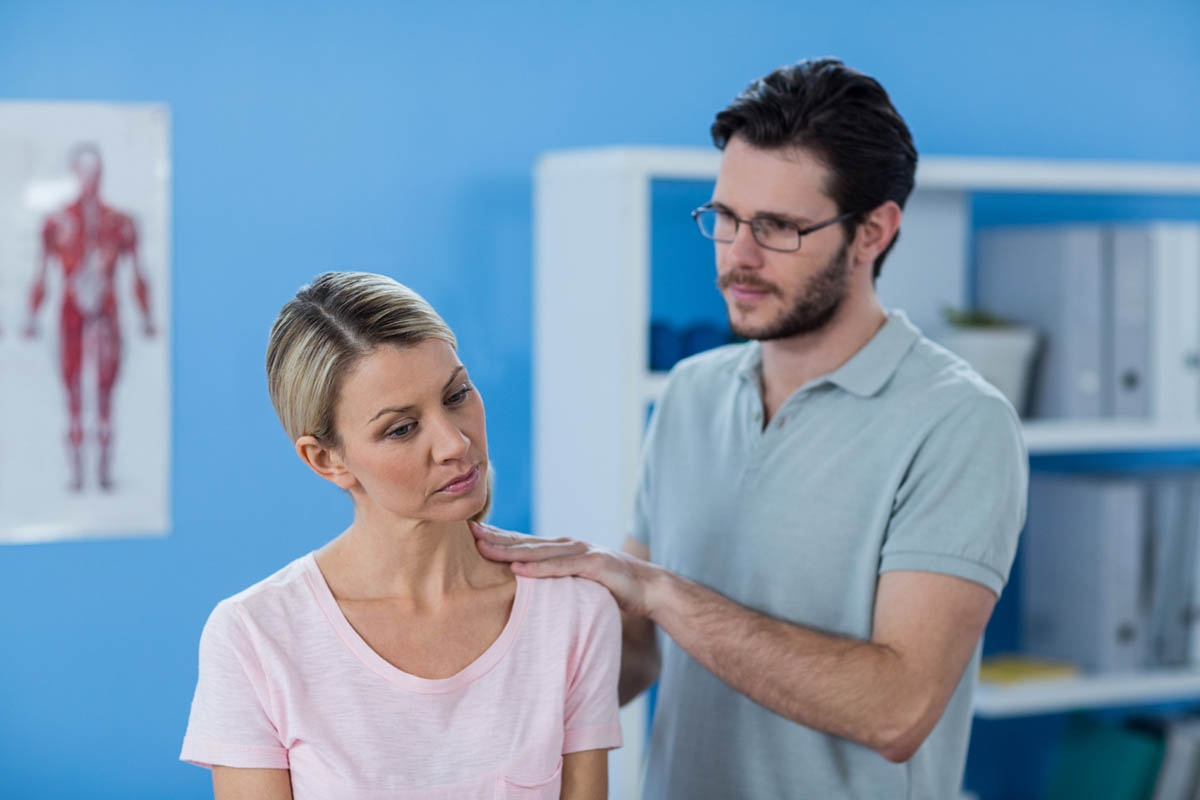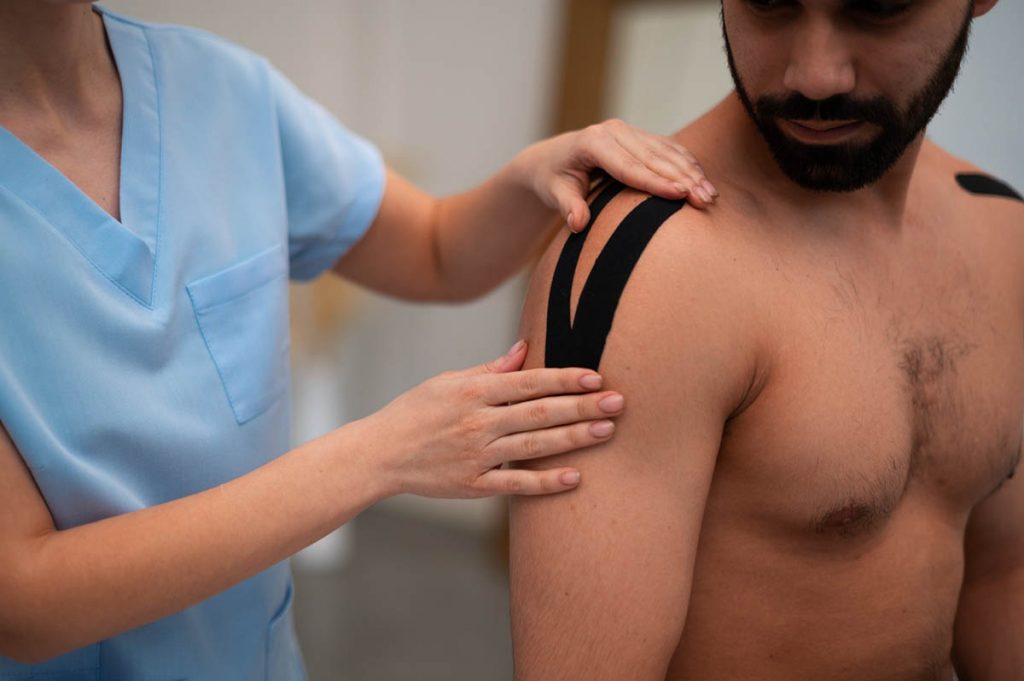People with rotator cuff tears are among the millions worldwide who experience this common and often painful injury. The rotator cuff, a group of muscles and tendons surrounding the shoulder joint, stabilizes the shoulder and allows for a wide range of arm movements. When these tendons responsible for shoulder stability are torn, it can result in pain, weakness, and limited mobility. Physical therapy is vital in managing rotator cuff injuries, helping restore function, reduce pain, and prevent further injury. This guide will walk you through everything you need about rotator cuff tears, their natural history, and how physical therapy can help you recover.
Anatomy of the Rotator Cuff
The rotator cuff comprises four muscles and their tendons: the supraspinatus, infraspinatus, teres minor, and subscapularis. These muscles originate from the scapula (shoulder blade) and attach to the humerus (upper arm bone). They also include the rotator cuff tendon and biceps tendon. Together, they stabilize the shoulder joint and allow for a wide range of movements, such as lifting, rotating, and throwing. The supraspinatus tendon is susceptible to injury due to its location and function.
What is a Rotator Cuff Tear?
A rotator cuff tear occurs when one or more of the tendons in the rotator cuff are torn, either partially or entirely. Labral tears may also occur in conjunction with rotator cuff injuries. This injury can result from acute trauma, such as a fall or a traumatic event, or develop gradually due to repetitive stress or age-related degeneration. Chronic rotator cuff injuries can develop over time, often due to repetitive stress or poor shoulder mechanics. For many, rotator cuff tear physical therapy is an effective treatment option to help manage the symptoms and promote recovery.
Types of Rotator Cuff Tear
Rotator cuff tears can be categorized into two main types: partial tears, where the tendon is frayed but not completely severed, and full-thickness tears, which involve a complete tendon rupture. The population prevalence of having at least one full-thickness rotator cuff tear was 22.2% (4.5% bilateral). Each type varies in severity and symptoms, impacting the approach to treatment and rehabilitation.
- Partial Tear: A partial tear involves damage to the tendon but does not completely sever it. This type of tear may cause pain and weakness but often allows for some level of continued function.
- Complete Tear: A complete tear, often called a full-thickness tear, occurs when the tendon is entirely detached from the bone. This injury severity generally leads to considerable pain and a significant decrease in function, complicating everyday tasks.
- Acute Tear: An acute tear happens suddenly, often due to a specific traumatic injury, such as lifting a heavy object or falling on an outstretched arm. Acute tears are typically associated with severe pain and immediate loss of shoulder function.
Common Causes of Rotator Cuff Tear
Rotator cuff tears can arise from multiple factors, such as age-related degeneration, where the tendons naturally weaken over time, increasing the likelihood of tears, or from shoulder impingement syndrome exacerbating the damage. Additionally, repetitive overhead activities—daily in specific jobs or sports like painting and tennis—can stress the rotator cuff and lead to injury. Sudden acute injuries from falls or heavy lifting, particularly for a heavy laborer, can also result in immediate tears, while chronic poor posture, especially with rounded shoulders, places extra strain on the rotator cuff, potentially contributing to its damage. Harmful positions and shoulder injuries like impingement syndrome are other contributing factors that can cause or exacerbate rotator cuff damage.
Signs and Symptoms of a Rotator Cuff Tear
Common signs of shoulder pain typically include pain, often experienced on the outer part of the shoulder and radiating down the arm. Limited range of motion can occur, leading to stiffness and difficulties in daily living activities such as combing hair or reaching for objects. Some individuals may also notice a sensation of popping or clicking during shoulder movement, particularly during overhead motions. Shoulder weakness is a common symptom that can significantly impact daily life and everyday activities.
Diagnosis of Rotator Cuff Tear

To diagnose a rotator cuff tear, a healthcare provider will typically perform a physical examination to assess your shoulder’s range of motion, strength, and pain levels. A professional for imaging tests may use X-rays, MRI, or ultrasound to confirm the diagnosis and determine the severity of the tear. Special tests like the drop arm or empty can test may also be performed during the physical exam.
How Rotator Cuff Physical Therapy Can Help
Physical therapy plays a critical role in the recovery process for rotator cuff tears and other shoulder injuries, whether treated surgically or non-surgically, as it addresses pain and functional limitations. Physiotherapy exercise programs are less expensive and have less risk than surgical ones. However, the success of physiotherapy in patients with massive rotator cuff tears is highly variable, with published success rates of 32–96%. It helps to alleviate pain, restore shoulder strength, improve flexibility, and enhance overall shoulder function while reducing the risk of re-injury.
Benefits of Physical Therapy for Rotator Cuff Tear
Physical therapy provides a variety of advantages for those dealing with a rotator cuff tear, including recovery without surgery in many cases. One of the key benefits is pain relief, as specialized exercises and manual therapy techniques work to decrease pain and inflammation in the shoulder, enabling you to return to physical activities more comfortably. Additionally, physical therapy for rotator cuff tear without surgery emphasizes improved mobility through stretching and range of motion exercises, which aim to restore normal shoulder function. Strengthening exercises, including lifting weights and targeting the muscles surrounding the shoulder, such as the rhomboid muscles, are integral to the program to alleviate strain on the rotator cuff and improve muscle strength. Finally, therapy includes education on proper body mechanics and posture, crucial in preventing future injuries. Exercise therapy that includes isometric strengthening exercises is particularly effective in improving shoulder function.
Common Physical Therapy Techniques for Rotator Cuff Tears
Stretching exercises are essential for maintaining flexibility and preventing shoulder stiffness, especially in patients. Incorporating strengthening exercises focusing on the shoulder muscles, such as external and internal rotation with resistance bands, fortifies the scapular stabilizers and surrounding musculature. Side-lying external rotation with elastic stretch bands is one effective exercise targeting the rotator cuff muscles. Manual therapy techniques, including massage and joint mobilizations, can alleviate pain, reduce rotator cuff tendon irritation, and enhance mobility. Additionally, electrical stimulation and ultrasound imaging therapy utilize sound waves to encourage tissue healing and minimize inflammation, making it a valuable tool in recovery.
How Physical Therapy Can Help After Rotator Cuff Surgery
If surgery, such as arthroscopic rotator cuff repair, is required to repair a rotator cuff tear, physical therapy is essential for a successful recovery. The rehabilitation program is typically divided into stages, each with specific goals and exercises.
Phases of Physical Therapy After Rotator Cuff Surgery
Following rotator cuff surgery, the rehabilitation process is typically divided into distinct phases, each targeting specific recovery goals. Early phases focus on pain management and gentle range-of-motion exercises, while later stages emphasize strength-building and functional training to restore full shoulder function.
- Maximal Protection: This initial phase protects the surgical repair while reducing pain and inflammation. Passive range of motion exercises and gentle stretching are introduced during this rehabilitation stage.
- Moderate Protection: Active range of motion and gentle strengthening exercises are introduced as healing progresses. The focus is on gradually restoring shoulder mobility and strength.
- Return to Activity: During this phase, more advanced strengthening exercises are performed to prepare the shoulder for normal activities.
- Return to Sport: For athletes, the final stage of rehabilitation involves sport-specific and activity-specific exercises to ensure a safe return to their sport, particularly in ball-throwing sports.
Strategy to Prevent Rotator Cuff Tears
To prevent rotator cuff tears, shoulder health must be maintained by practicing good posture and engaging in fitness center activities that include regular exercise. Additionally, avoiding repetitive stress on the shoulder can significantly reduce the risk of injury.
Maintain Proper Posture
Good posture reduces strain on the shoulder muscles and tendons, helping to maintain proper shoulder-blade position during activities. Avoid slouching or hunching your shoulders, especially when sitting for extended periods.
Exercise to Strengthen Shoulder and Rotator Cuff Muscles
Regular exercise focusing on shoulder and rotator cuff muscles can help maintain strength and flexibility, reducing the risk of injury and tears. Proper positioning during exercises and hands-on treatments can significantly contribute to preventing injuries.
Proper Sleeping Position
Sleep on your back or non-affected side to avoid putting unnecessary pressure on the shoulder.
Avoid Repetitive Overhead Arm Position
Minimize activities that require repetitive overhead movements or take frequent breaks to reduce stress on the rotator cuff.
When to Seek Medical Help

If you experience persistent shoulder pain, weakness, or limited range of motion, seeking medical help is essential. Early intervention can prevent further damage and improve your chances of a full recovery. Consulting an orthopedic surgeon or other medical professionals can provide necessary medical advice and help tailor a treatment program to your needs.
Conclusion
Rotator cuff tears can be painful and debilitating, but with proper care, including physical therapy, most individuals can fully recover and return to regular activities. At Land and Sea Physical Therapy, our experienced team is dedicated to helping you regain your shoulder function and improve your quality of life—request appointment today to begin your journey to recovery. Remember, early diagnosis and intervention are key to preventing long-term complications.
FAQs
Can you heal a torn rotator cuff with physical therapy?
Yes, physical therapy can effectively manage many rotator cuff tears, especially partial tears. Physical therapy can help rotator cuff tear reduce pain and improve function by strengthening the surrounding muscles and improving shoulder mobility.
When should I start physical therapy for a rotator cuff tear?
It’s best to start physical therapy as soon as possible after a rotator cuff tear is diagnosed. Early intervention can help reduce pain, prevent further damage, and speed recovery.
How to treat rotator cuff injury without surgery?
For many individuals, rotator cuff injuries can be treated without surgery through a combination of rest, physical therapy, and pain management strategies. Conservative treatments like a physical therapy program and hands-on treatments are particularly effective in managing symptoms and promoting them.

